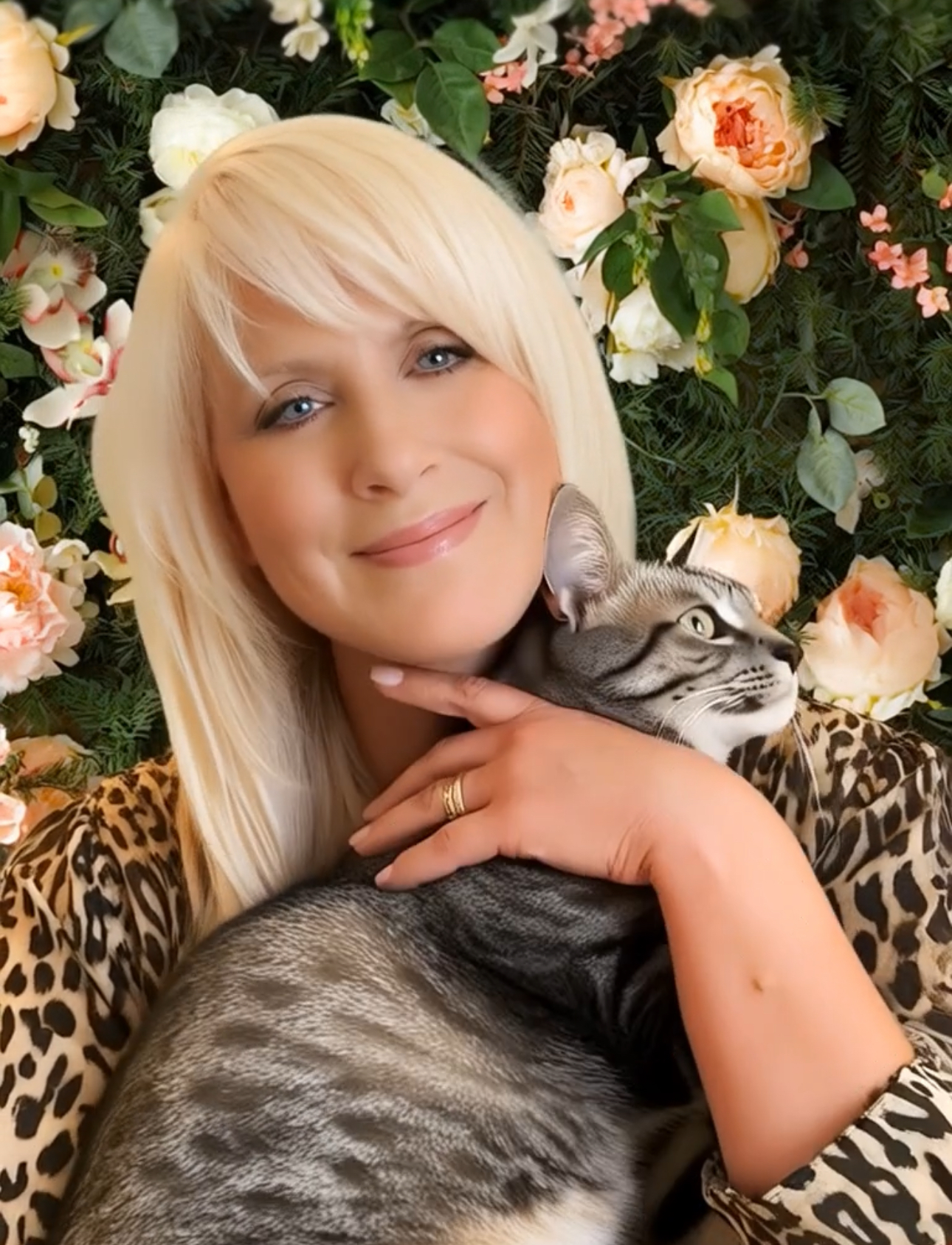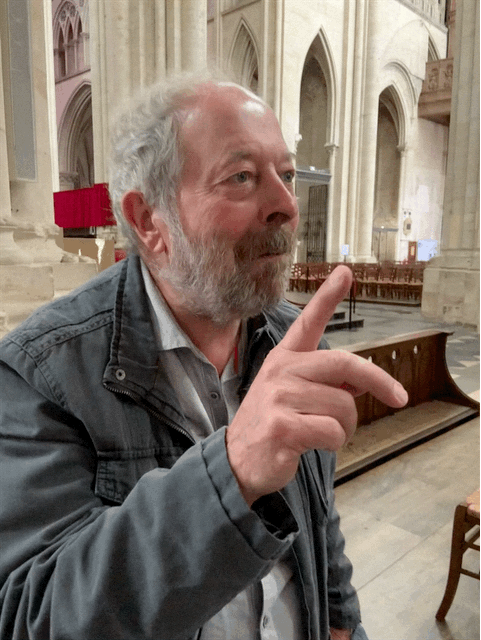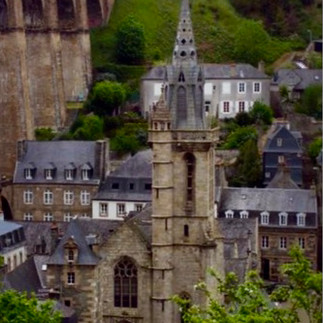At Home and In Paris
- Judith Mitrani
- Aug 7, 2023
- 9 min read
Updated: Jan 29, 2024
Bright and Brilliant Brittany: Part I

I'm so excited to finally share our wonderful encounters on our trip to Brittany in July, following the Independence Day Parade in Paris. With our windows open, we could hear the sounds of the airshow in formation overhead and the horses clip-clopping down the street and see the scenes we could never have viewed in such detail as we did in the comfort of our own home, just minutes on foot from the festivities in the morning. The military parade started out from the glorious Arche de Triumph. for French Independence Day celebrations here in Paris. As usual, we had the best seats in the house on our reclining love seat in the TV room, in safety with the company of our cat Mickey.



"Moral Forces" was the theme of this year's two-hour military parade. According to General Christophe Abad, Military Governor of Paris, this theme is embraced by all generations, particularly by young people in the armed forces, both operational and reservist. From 10 am to midday, the Avenue des Champs-Élysées and the clear sunny sky above Paris welcomed more than 6,000 on foot,

70 aircraft, 20 helicopters, 200 vehicles, and 200 horses of the Republican Guard. The parade ended with a performance on the Place de la Concorde by young reservists honoring the construction of the Conseil National de la Résistance in 1943 and paying tribute to the death of Jean Moulin and the creation of the "Chant des partisans".

In the evening, there was a splendid two-hour concert with orchestra and opera singers to the delight of all attending while picnicking on the Champs de Mars or watching the broadcast live.

With Mickey cuddled between us on the blanket I'd knitted for him, we enjoyed the concert as much as if we were there in the flesh, minus the crowds. And the Fireworks were spectacular as always!






We took off for the Northwest of France three days after the national festivities. My experience of this trip was so rich, I've divided my story into three parts so that the reader won't be over-saturated with details and photographs to the point of boredom. I will start by explaining that the original plan for what was usually a hot July in Paris was to spend twelve glorious days in Switzerland in a town called Vevey with a beautiful view of Lac Léman, better known to Americans as Lake Geneva. We expected to use our hotel overlooking the lake and surrounded by the still-snowy Alps as a base for day trips, as we had done so many years ago when we had stayed on the French side of that same lake, in the home of generous friends in Thonon-Le-Bain.

However, just ten days before our departure, it appeared that the forecast for the weather would be inordinately hot, the 'fern' as they call it in Switzerland. They expected heat in the 90s, and as we were attempting to get away from Paris for a guarantee of cool weather, we decided to change leads. We called the hotel where we had stayed in Brittany the month before.

They were delighted to hear from us and said that not only did they have a room, but they had 'our' room, number 21. Now all we had to do was to finalize our plans for breaking up the trip home, which would be pretty long and could quickly spoil the relaxing effect of our holiday by the ocean with a diet of seafood and crêpes. So we arranged a stay at a place we knew in Honfleur, a small hotel in the harbor. We made a date with Didier, our friend in Caen, to join us for dinner at the restaurant l'Absinthe, a delicious choice that we had previously experienced more than once. Our friend was delighted with the invitation, and we looked forward to seeing him before starting on the last leg of a 2 1/2 hour-long ride back to Paris on our 12th day away. We also had enough time to visit the home of the French composer Eric Satie once again The week before we left, we were joined for dinner at home by Antoine and Lexia, who had just been married at the beginning of June and had just returned from their honeymoon in Ireland. Mickey decided to see what they were about, and the three of them hit it off so well that we invited them to stay in our apartment to care for Mickey and/our home while we were gone. They excepted with enthusiasm, and we were pleased for many reasons. We were happy not to have to ask Jeffrey to separate from his family for such a long time, although he would have graciously done so.

But Antoine did not have to return to work until the end of August and could accomplish his writing at home all day. Mickey wouldn't be so alone, and he'd indeed have ample attention. When the day came for our departure, we felt secure that Mickey would get his due affection while we were away. Sure enough, the pictures we received from Antoine and Lexia testified to Mickey's delight with this young couple, who could move around with him on the floor and chose to sit in the living room and play with him rather than watch movies or concerts on television in the evening. So many photos, most selfies of Jeff and Antoine with Mickey, and some that touched us deeply, especially those of Lexia brushing Mickey while nose to nose when they showed up in my inbox or on texts almost every day, accompanied by reports that warmed our hearts and eased our consciences.

On the way to Roscoff, we decided to stop and break up the long trip in the city of Le Mans. We had heard fantastic things about the Catholic Cathedral there, and we had a lead on a fabulous restaurant that would be open at just the right time, giving us ample opportunity to visit the town and its Cathedral beforehand.







The Cathedral of Saint Julian of Le Mans was established by the city's first Bishop, who brought Christianity to the area around the beginning of the 4th century. Its construction dates from the




6th through the 14th centuries and, to my delight, featured many French Gothic element The Cathedral, which combines a Romanesque nave and a High Gothic choir, is notable for its rich collection of stained glass and the spectacular bifurcating flying buttresses at its eastern end.

Buried in this Cathedral was Geoffrey Plantagenet, the Count of Anjou. We had the pleasure of learning all about Count Geoffrey, the Cathedral, and the term Plantagenet from an older man who chose to start up a conversation with me in English. Then he continued to chat with Ted in French while I snapped a picture of his lively face as he told us the story of all the different stages of the construction of this Cathedral, the pink stone used in many areas of the Cathedral, and everything that had gone on through religious wars and revolutions. He pointed out where old and new joined and many details and historical facts we would never have known. He truly made this a rich experience. He told us that he had been visiting this Cathedral for 70 years, since he was a young boy living close by, and was writing a book all about its fascinating history.
Among so many other things, he told us about Geoffrey's nickname, "Plantagenet," which came from the sprig of (broom"genet") plant with its yellow flower that he wore in his cap He explained that the name had a double meaning, the yellow flowers (Plante Jaune, in French) typical of these broom plants that grow in the area. Count Geoffrey married one of the strongest women in history, Empress Matilda She went off to claim her English crown while he subdued their French territories (Anjou, Maine, and Normandy). We were fortunate to have had this fantastic opportunity to meet someone willing to share his time, experience, and energy No guide could have possibly done better. We exchanged phone numbers and he walked us in the direction of our restaurant. Our walk through the town filled with half-timbered houses was delightful, and the photos here are only a sample of the beauty and the history of this fantastic city, which we will no doubt return to for a more extended visit Our lunch in Le Fou du Roy was delicious
and relaxing and gave us the sustenance to continue our journey through Brittany to its West coast We arrived in the town of Roscoff, the capital of Finisterre, the largest department in Brittany Our room seemed to float in the ocean whenever the tide rolled in, and we could view
the many sailboats and numerous islands just offshore from our hotel room window or from the oversized terrace that gave us a lovely place to relax with the cool fresh air of this fantastic part of France The hotel had two restaurants, which made life easy if we just wanted to kick back and
relax, or if we came in late from an all-day visit to another town and needed a bite to eat or a nightcap before turning in The first night we chose to eat in the bar, which we seemed to have all to ourselves, sitting at a lovely table by the window with the waves splashing up against the seawall at high tide The service was friendly, and the waitress was filled with good humor We ate the most delightful Caesar salad with chicken that had been poached to perfection and was strewn along the top of the salad, like large coins overlapping one another Ted had done a serious bit of research about towns close to a Roscoff along the Northwest coast that we could visit, and we went to bed that night and were up early for a plentiful buffet breakfast in the main dining room overlooking the ocean before taking off in Evie for our first adventure This first day-trip
would be easy as we had driven over six hours the day before and were a little worn out and desperately needed to stretch our legs. So we went into the town of Roscoff and revisited the Cathedral there and some attractive and enticing shops. We also decided to stroll through the exotic botanical garden in the city, which had been highly recommended to us by our friends,
Mark and Donna, with whom we had met on our last trip to Finisterre. After a late seafood lunch, or maybe you might call it an early seafood supper, we headed back to the hotel to kick
back and relax and plan for our next day's adventure. This one was to a town called Morlaix, a medieval town famous for its 19th-century viaduct, its charming 16th-century half-timber houses, and the beautiful Bay of Morlaix. The church of Saint-Mélaine, in flamboyant gothic style from
the 14th century) was dedicated to Melaine de Rennes. The monastery of Saint-Mélaine was founded between 1149 and 1157 following a donation from Guyomarc'h III, Lord of Morlaix. The church was built at the end of the 15th century by the Beaumanoir workshop of architects. In 1879, the roof lantern of the church was replaced by a wooden spire covered with zinc. The church houses beautiful sandpits and statues from the 15th to the 19th century, and a Dallam organ was restored in 1970. Wooden vaults with sandpit vaults and ornamented entrances cover the church with three naves. At the southern portal, a font is established on the mullion verticle
shafts between windows) separating the two doors. The monastery on which this church depended was founded between 1149 and 1157. The church, in flamboyant Gothic style, dates from the 15th century. Its "Beaumanoir" bell tower was modified in 1879: a spire replaced the roof lantern. The church houses a 17th-century organ, a polychrome wooden altarpiece from the 15th century, an oil on canvas painting of the Holy Family from 1617, statues of St. Tugdual in polychrome wood from the 15th century, Saint Yves, Saint Marguerite and, a sculpted group of Saint Anne and the Virgin from the 16th century, Saint Pierre and Saint Mélaine from the 17th century. During its wealthy heyday of the Middle Ages, Morlaix was the biggest port in Brittany, and the town
specialized in producing and trading linen. Morlaix is one of the few towns in Brittany where you can still find these half-timbered houses built in the 16th century by rich linen
merchants. The Maison à Pondalez at number 9 Grand Rue, with its street-facing corbelled facade, is a rare survivor of that era and has been restored. She was now something of a small museum, giving us a wonderful sense of what it would be like to be a wealthy linen merchant and to live on this grand pedestrian-only rue in this town that had been rescued 75 years ago. After we had our fill of these storied streets and houses, we stopped in the town square for lunch at a colorful brasserie with a view of the church and the aqueduct towering above it, and we made our first 'Aussie sighting' of our trip.
As we left behind The Terrace, The Town Hall ad that spectacular aqueduct, we headed for a restful
night in Roscoff, hoping to be fresh and ready for our trip to Treguier, also known as Troguery, and Chapter II of my story.













































































































Comments